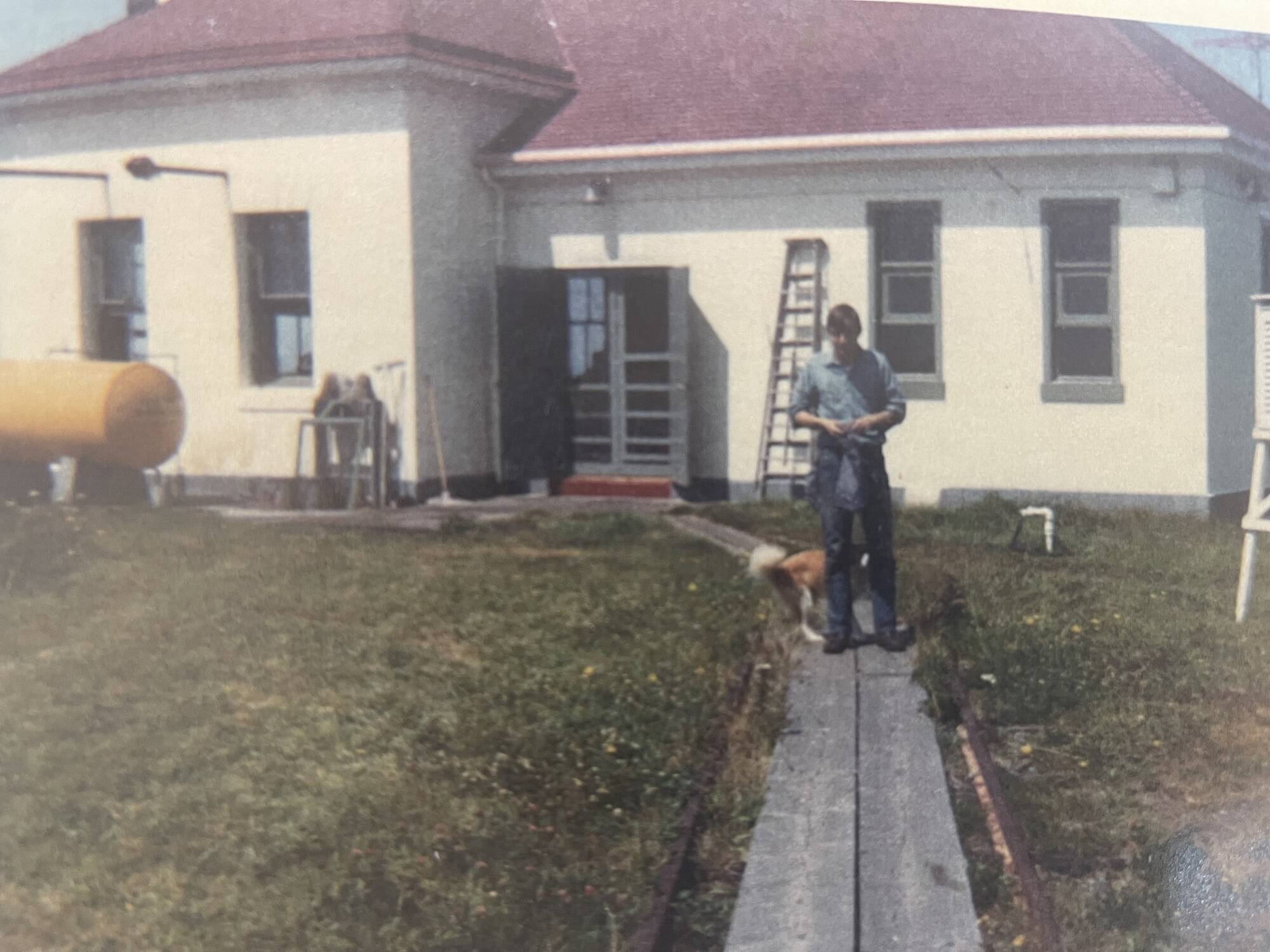At the April meeting of the West End Historical Society, a room full of eager listeners was transported back in time as Chuck and Patsy Jennings recounted their unique experience of living on Destruction Island. Their tales from March to October 1966, when Chuck was stationed there with the U.S. Coast Guard, painted a picture of isolation and adventure
Destruction Island, also known historically as Green Island, is a small, 30-acre landmass located approximately 3.5 miles off the Washington coast. Now part of the Quillayute Needles National Wildlife Refuge and home to diverse seabirds and marine mammals, the island has an interesting past. Its ominous name is derived from tragic massacres in the late 18th century involving Spanish and English explorers. The island’s rocky shores also witnessed numerous shipwrecks, adding to its reputation.
The Jennings’ story began with a challenging boat trip to the island, where even their dog, Frisky, was not spared from seasickness. “Frisky got sick as a dog,” Chuck chuckled, recalling the choppy ride. Supplies were boated in every two weeks via a Boston Whaler and crane and tram car, ensuring the Coast Guard detachment had what they needed to sustain their isolated life.
Living in one of the four apartments on the island, the Jennings adapted to their new routine. Electricity came from two large generators powered by diesel stored in an underground tank. For leisure, they indulged in beachcombing, fishing, and a variety of games. Modern comforts like current movies and the rare reception of Canadian TV via an antenna made the isolation more bearable. “We could hear the sound of civilization – log trucks on the highway near Kalaloch,” Chuck recalled.
The island was not always quiet. Frequent inspections by the Coast Guard and visits from curious people broke the monotony of island life. The Jennings’ tenure coincided with the final years of manned operations at the Destruction Island Lighthouse, which saw its light automated in 1968 after the last keepers left.
Destruction Island’s lighthouse, a towering 94-foot structure built between 1888 and 1891, was a beacon for mariners for many years. The Coast Guard had contemplated abandoning the station in 1963, but opposition from mariners kept it operational until it was fully automated. The Fresnel lens, which cast its guiding light for decades, was removed in 1995 and is now a centerpiece at the Westport Maritime Museum.
The Jennings’ time on Destruction Island ended in October 1966, but their stories preserved a crucial part of its history. Their account offered a glimpse into a bygone era of lighthouse keeping and the unique challenges faced by those stationed on remote islands.
Destruction Island’s light was extinguished for good in April 2008, marking the end of its role in maritime navigation. Today, only the lighthouse, two oil houses, and the fog signal building remain as silent witnesses to its past. The Fresnel lens continues to enchant visitors at the Westport Maritime Museum, standing as a testament to the enduring legacy of Destruction Island’s maritime history.



